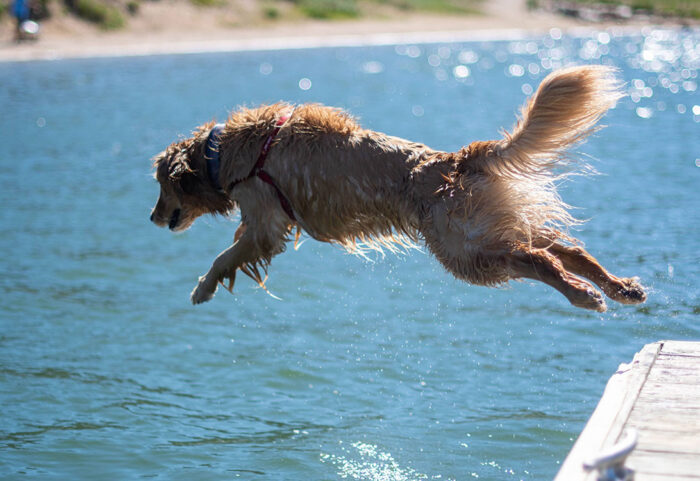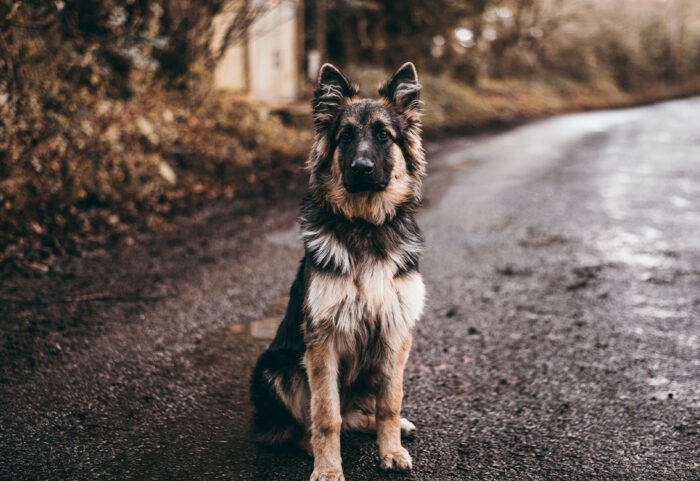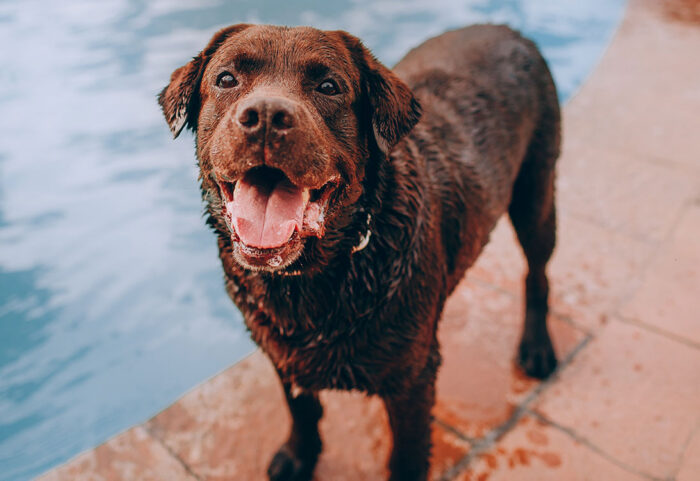First 2 Hours: My Dog Tore His Paw Pad
A torn paw pad can be really painful for your dog. It’s a relatively common injury – dogs use their paws to traverse all manner of terrain. You’re most likely to notice your dog has a torn paw pad when he steps on something and winces, cries out in pain, or starts leaving bloody paw prints everywhere. Once you’ve detected an injury, here’s what you should do.
0 – 30 Minutes In: Calm and Clean
Before you even attempt to inspect your dog’s paw pad, you’ll need to calm and restrain him. Keep in mind that if he’s in pain, he may be more likely to squirm (or even bite) than he otherwise would be. It’s not a bad idea to keep a muzzle in your pet first aid kit for just this type of situation. If that’s not possible, see if you can find someone else to help you restrain your dog while you attend his wound. Once it’s safe to do so, look at your dog’s paw pad as closely as possible. Is there any residual debris stuck in the wound, like a sharp pebble or a shard of glass? If you can do so relatively easily, remove the foreign object(s) with sanitized tweezers before proceeding. If the material is lodged too deeply or your dog seems to be in a lot of pain, don’t dig; your vet can sedate your dog to more comfortably remove the debris. When the wound is clear of debris, it’s time to clean it. Any mild anti-bacterial soap will do in a pinch but if you have betadine on-hand, use it to thoroughly disinfect the wound with the help of a clean cloth. If the wound is bleeding, apply pressure using a secondary clean cloth until the bleeding stops. (If it doesn’t stop completely after 10-15 minutes, take your dog to an emergency veterinary clinic.)
30 Minutes – 1 Hour In: Bandage the Wound
After the bleeding stops, it’s time to dress the wound so it can heal properly. Place a relatively thick piece of gauze on top of the wound, then wrap the gauze with self-adhesive tape. It’s always best to use a bandage that adheres to itself when working on animals…removing a bandage attached to hair really hurts! Once your dog’s wound is dressed, do what you can to keep him from messing with it. You may need a cone! It’s also important to keep your dog from walking on the pad as much as possible at first, especially if it was bleeding. You might want to put your dog in his crate for an hour or two immediately after bandaging the wound to ensure he gives it rest.
1 Hour – 2 Hours In: Check Back and Relax
A couple of hours after you treat your dog’s wound, it’s a good idea to visually inspect the gauze and bandage to be sure there’s not excessive bleeding seeping out. Remember that your dog might be sensitive to the touch for a day or two – try to give him space if he wants it. If the wound doesn’t look significantly better after two to three days, contact your vet. If you detect signs of infection such as puss or a foul smell, contact your vet. If your dog still won’t put any weight on the injured leg after about 24-48 hours, contact your vet.
Paw pad injuries are common, and they’re usually not serious. What can be serious are the infections that can result from a flesh wound. Keep a close eye on your dog’s paw pad and don’t hesitate to reach out to your vet if you have any concerns.


